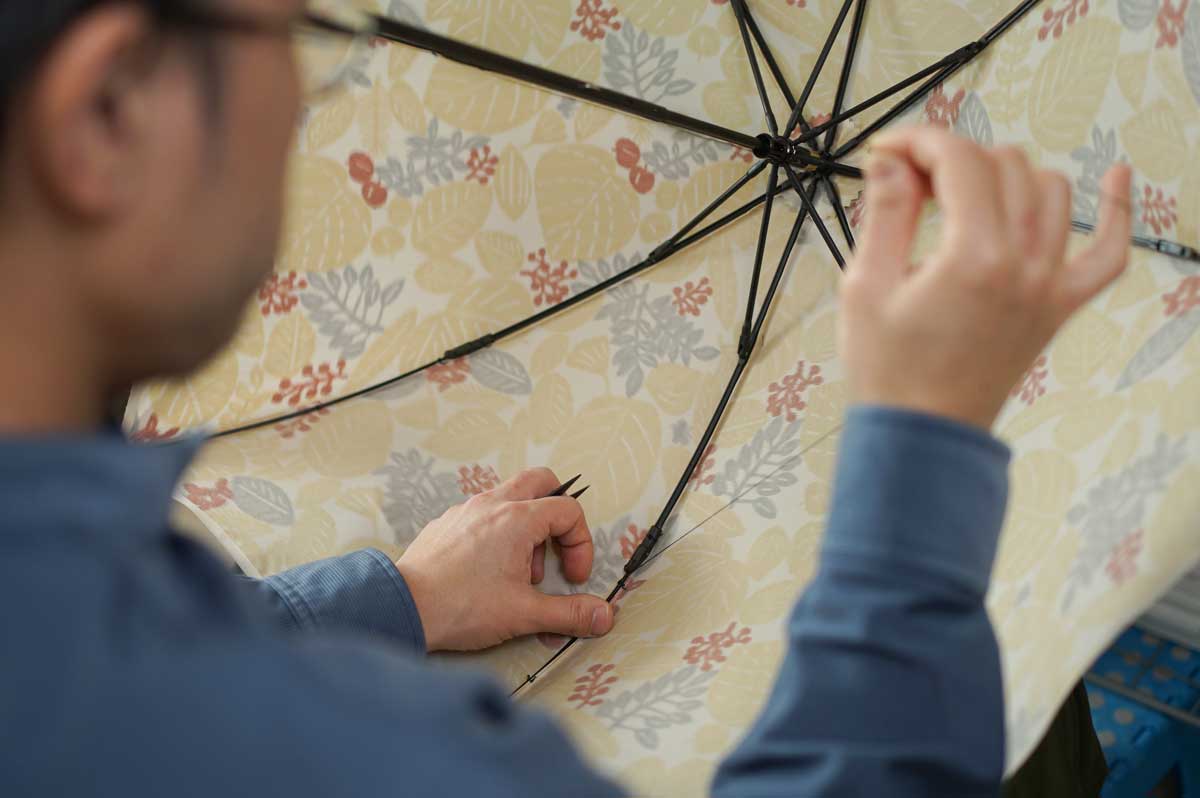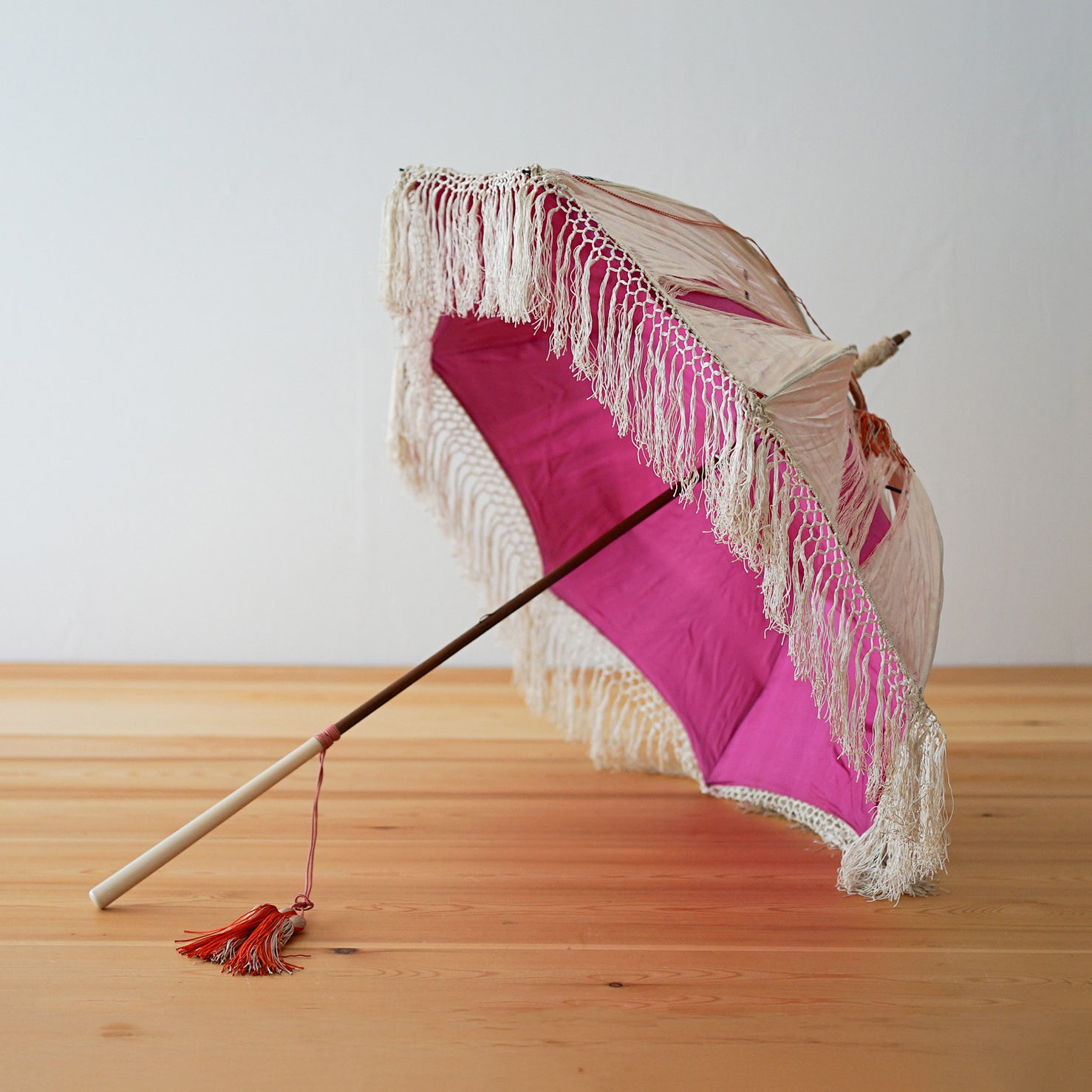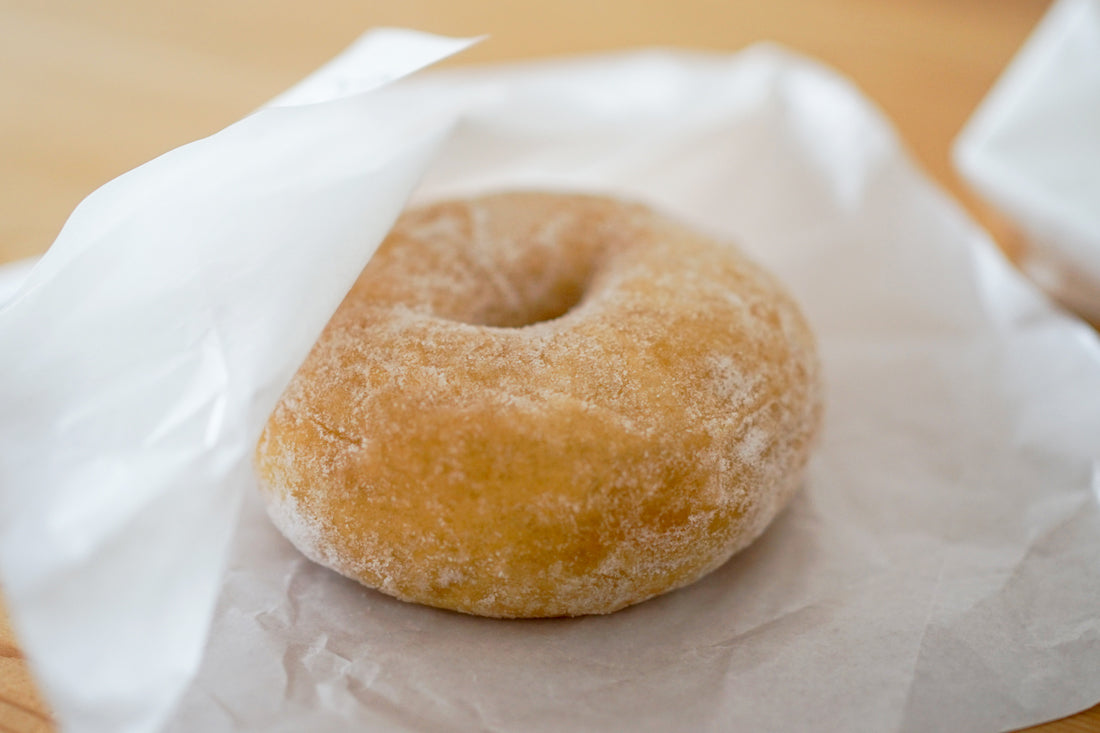My name is Kato, a sales staff member in charge of this blog.
When talking with customers who visit our Higashi-Nihonbashi shop, we are often asked, "What makes Japanese-made umbrellas different from others?"
The difference between an umbrella that costs tens of thousands of yen and one that costs 1,000 yen.
"I know they're handmade, but what makes them different? How are umbrellas made in the first place?"
In order to answer such simple questions, from now on, on an irregular basis, I would like to explain how Komiya Shoten makes umbrellas, using umbrella parts as a subject.
Thank you for your cooperation.
The first one is this part attached to the tip of a long umbrella.
About Jingasa
*Please check here for the names of umbrella parts.

The purpose of a jinbaori is to prevent rainwater from leaking out when the umbrella is opened, as it gets through the ferrule at the tip of the umbrella.
It was named jinbaori because its shape resembles the hats worn by lower-ranking soldiers in place of helmets during battles in the past.
When attaching the jinbasa, a flower-shaped piece of cloth called a "kikuza" is placed underneath the jinbasa to protect the umbrella fabric from wear and tear, and then it is fastened in place using a tool called a "jinkasa killer" (commonly known as a "jinkoro").

It seems that the name "Jingasa Goroshi" came from the expression "kasimeru" which then became "shimeru" (to kill), but there are several theories about the origin of the name.
By the way, the Jinkoro used by the craftsmen at Komiya Shoten has been passed down for generations.
Although it is a tool with a scary name, it is a warm tool that contains the thoughts of past craftsmen.

Long umbrellas come with ribs of various thicknesses, so there is not just one type of Jinkoro.
And Jinkoro is not sold at home improvement stores, and the tools used to make the umbrellas are made by specialized craftsmen behind the scenes.
Finally, nails are used to secure the jinbaori in place.
This is a job that requires skilled techniques, as the pieces need to be fastened tightly with no gaps.


Normally this completes the installation of the jinbaori, but in fact, there is other work that goes on behind the umbrellas at Komiya Shoten.
Further measures to prevent leaks are taken by inserting a waterproof gasket called a ``jinkasa gasket'' between the jinkasa and the chrysanthemum seat.

Umbrellas made in Japan are subject to quality standards set by the Japan Umbrella Promotion Council (JUPA), and the use of parts to improve quality is left to the standards of each manufacturer.
There is no obligation to use this gasket, but at Komiya Shoten, we discuss with our craftsmen and try to incorporate ideas into even the invisible parts so that customers can use their umbrellas with peace of mind for a long time.
Japanese umbrellas are made using the same traditional umbrella-making methods, incorporating new materials and parts, and undergoing daily trial and error.
If you have a Japanese-made long umbrella made by Komiya Shoten, please take a look at this unsung hero, the "jinbaori."







